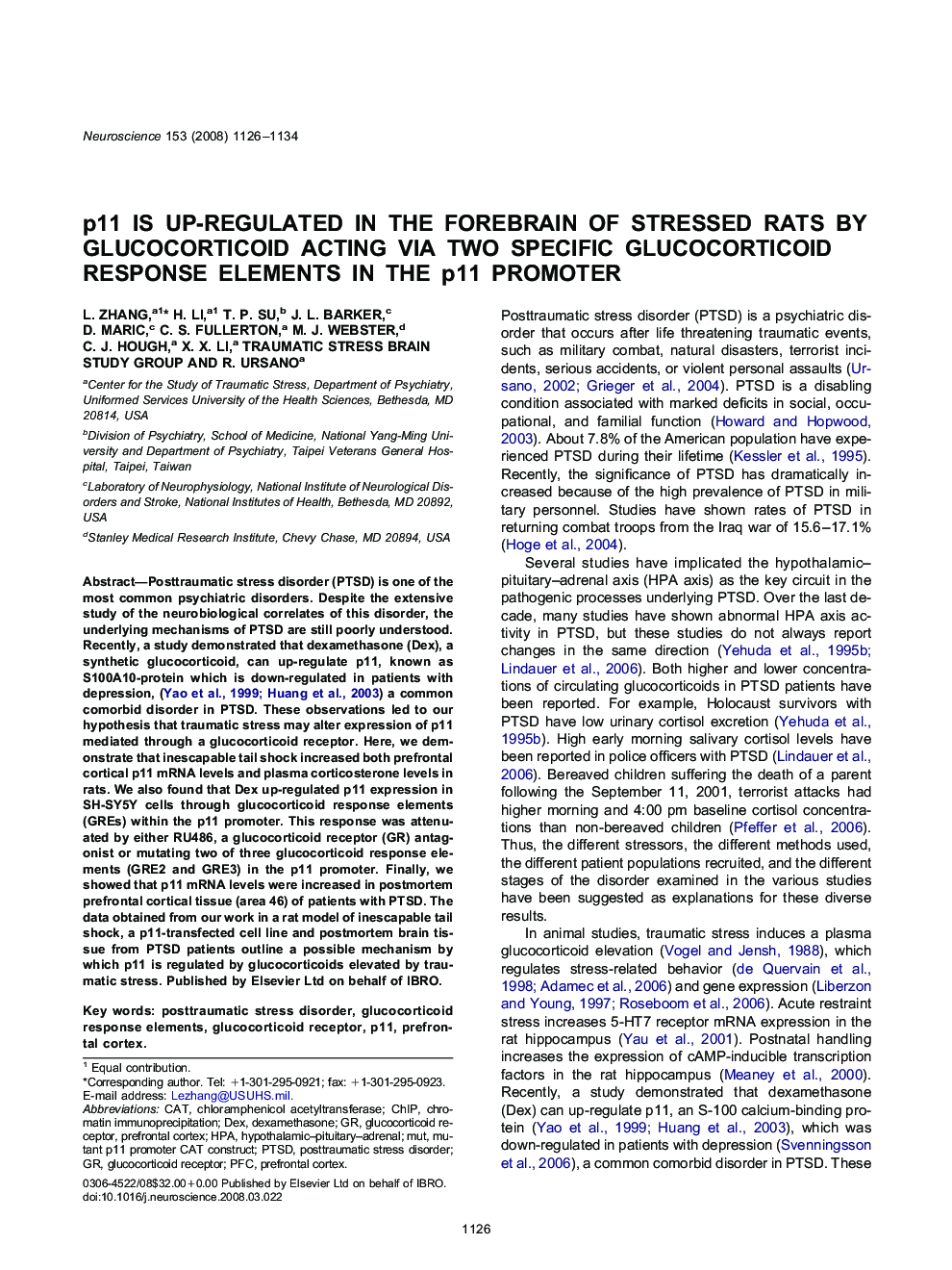| Article ID | Journal | Published Year | Pages | File Type |
|---|---|---|---|---|
| 4341783 | Neuroscience | 2008 | 9 Pages |
Abstract
Posttraumatic stress disorder (PTSD) is one of the most common psychiatric disorders. Despite the extensive study of the neurobiological correlates of this disorder, the underlying mechanisms of PTSD are still poorly understood. Recently, a study demonstrated that dexamethasone (Dex), a synthetic glucocorticoid, can up-regulate p11, known as S100A10-protein which is down-regulated in patients with depression, (Yao et al., 1999; Huang et al., 2003) a common comorbid disorder in PTSD. These observations led to our hypothesis that traumatic stress may alter expression of p11 mediated through a glucocorticoid receptor. Here, we demonstrate that inescapable tail shock increased both prefrontal cortical p11 mRNA levels and plasma corticosterone levels in rats. We also found that Dex up-regulated p11 expression in SH-SY5Y cells through glucocorticoid response elements (GREs) within the p11 promoter. This response was attenuated by either RU486, a glucocorticoid receptor (GR) antagonist or mutating two of three glucocorticoid response elements (GRE2 and GRE3) in the p11 promoter. Finally, we showed that p11 mRNA levels were increased in postmortem prefrontal cortical tissue (area 46) of patients with PTSD. The data obtained from our work in a rat model of inescapable tail shock, a p11-transfected cell line and postmortem brain tissue from PTSD patients outline a possible mechanism by which p11 is regulated by glucocorticoids elevated by traumatic stress.
Keywords
Related Topics
Life Sciences
Neuroscience
Neuroscience (General)
Authors
L. Zhang, H. Li, T.P. Su, J.L. Barker, D. Maric, C.S. Fullerton, M.J. Webster, C.J. Hough, X.X. Li, Traumatic Stress Brain Study Group Traumatic Stress Brain Study Group, R. Ursano,
